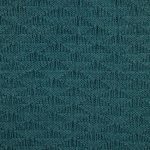Are you looking to add some unique and eye-catching detailing to your knitted projects? Look no further than knitting holes! These delicate and intricate patterns can add a touch of elegance and interest to any piece, from scarves to sweaters.
To get started, it’s important to understand the purpose of knitting holes. While they may seem like a mistake or flaw in your knitting, they are actually intentional and can serve a variety of purposes, such as adding ventilation, creating a lacy effect, or simply adding visual interest.
By choosing the right yarn and needles and learning some basic and advanced hole stitch patterns, you can incorporate these detailing techniques into your projects with ease.
So grab your knitting needles and let’s get started!
Table of Contents
Understanding the Purpose of Knitting Holes
Let’s dive into why you should be knitting holes and how they can add a touch of elegance to your projects! Knitted holes serve a purpose beyond being a mere design element. They add breathability to your projects, which is especially useful for garments like sweaters and scarves.
With holes, the wearer won’t feel too hot or suffocated, making your knitted creations more comfortable to wear. But holes aren’t just practical, they also add a decorative touch to your projects. Whether you use them sparingly or heavily, they can make a big impact on the overall look of your creation.
For example, if you’re making a sweater, adding a few small holes to the sleeves or neckline can give it a unique and modern flair. When it comes to knitting holes, there are many ways to do it. You can use simple techniques like yarn overs or make more complex patterns with lace stitches.
The key is to experiment and find what works best for your project. With a bit of practice, you’ll be able to master the art of knitting holes and take your projects to the next level.
Choosing the Right Yarn and Needles
To get the perfect look for your creation, you’ll need to carefully select the appropriate yarn and needles. The right combination of these two elements can make a huge difference in the final product. Here are three tips to help you choose the perfect yarn and needles for your knitting project:
-
Consider the fiber content of the yarn. Some fibers are more delicate and drapey, while others are more sturdy and hold their shape well. If you want to create a delicate, lacy look with your knitted holes, consider using a yarn that has a high percentage of silk or alpaca. These fibers are known for their softness and drape, which will help your holes look elegant and subtle.
-
Pay attention to the weight of the yarn. The weight of the yarn you choose will also affect the final look of your knitted holes. If you want your holes to be delicate and barely visible, choose a lightweight yarn. A heavier yarn will create larger, more noticeable holes. Remember, the weight of the yarn will also affect the size of the needles you use, so make sure to choose needles that are appropriate for the weight of the yarn.
-
Experiment with different needle sizes. The size of your needles will also affect the final look of your knitted holes. If you want your holes to be small and subtle, choose a smaller needle size. If you want your holes to be larger and more noticeable, choose a larger needle size. Don’t be afraid to experiment with different needle sizes until you find the perfect fit for your project.
Remember, the right combination of yarn and needles will help you create the perfect knitted holes for your project.
Learning Basic Hole Stitch Patterns
As you delve into the world of knitting, familiarizing yourself with basic stitch patterns for creating holes will be essential.
One of the simplest stitches for creating holes is the yarn-over stitch. To create a yarn-over, simply bring the yarn to the front of your work, then over the needle to the back. When you knit the next stitch, the yarn-over will create a small hole in your work. This stitch is perfect for creating eyelets or lacey patterns.
Another stitch that creates a unique hole pattern is the drop-stitch. To create a drop-stitch, simply knit a stitch as usual, but don’t pull the loop off the needle. Instead, bring your yarn to the front of your work and wrap it twice around the needle. Then, pull the first stitch off the needle, allowing the extra yarn to create a long loop. This stitch is perfect for creating a laddered effect in your work.
The twisted stitch is another great option for creating holes. To create a twisted stitch, simply knit two stitches together, but don’t slip them off the needle. Instead, wrap the yarn around the needle again and knit the same two stitches together once more. This will create a twisted stitch that adds texture and interest to your work.
With these basic hole stitch patterns, you can add delicate and eye-catching detailing to any of your knitting projects.
Experimenting with Advanced Hole Stitch Patterns
Now that you’ve mastered basic hole stitch patterns, it’s time to step up your game and experiment with advanced ones.
Two popular options are the Lace Stitch and Cable Stitch. Lace Stitch creates intricate and delicate patterns that look like lace, while Cable Stitch adds texture and depth to your knitting.
Give these advanced hole stitch patterns a try to take your knitting to the next level!
Lace Stitch
Ah, lace stitch – the perfect way to add a touch of elegance and sophistication to any knitting project. This stitch pattern creates delicate and intricate holes that are perfect for shawls, scarves, or even as accents on sweaters. The lace stitch involves knitting two or more stitches together and then yarn over, creating a hole in your knitting.
To help you get started with lace stitch, here is a table that shows you how to create the pattern:
| Row | Stitch Pattern |
|---|---|
| 1 | K1, yo, k2tog; repeat from * to end |
| 2 | Purl all stitches |
| 3 | K2, yo, k2tog; repeat from * to end, ending with k1 |
| 4 | Purl all stitches |
Repeat these four rows to create the lace stitch pattern. Remember to pay close attention to your tension as it can affect the appearance of the holes. With a little practice, you’ll be able to master this stitch and incorporate it into your knitting projects.
Cable Stitch
Get ready to add some texture and dimension to your next project with the cable stitch. This stitch creates a twisted look that resembles cables, making it perfect for adding interest to sweaters, scarves, and even hats.
To start, you’ll need to cast on an even number of stitches and then work a few rows of a basic knit stitch before beginning the cable pattern. To create the cable stitch, you’ll need to use a cable needle to hold some of your stitches to the front or back of your work. This will create the twist that gives the stitch its unique look.
Don’t worry if this sounds complicated at first – with a bit of practice, you’ll be able to master the cable stitch and add it to all of your knitting projects. So why not give it a try and see how the cable stitch can elevate your next project from ordinary to extraordinary?
Incorporating Holes into Your Knitted Projects
If you want to add some visual interest to your scarves and shawls, incorporating holes is a great way to do it. You can use different hole stitch patterns to create unique and delicate designs that’ll make your project stand out.
You can also experiment with creating holes in sweaters and cardigans to add some edge and modernity to your wardrobe.
Adding Holes to Scarves and Shawls
To add a touch of elegance and interest to your scarves and shawls, consider incorporating delicate holes into your knitting pattern. Holes can be added in a variety of ways, from simple eyelets to more intricate lace patterns. Here are a few tips to get you started:
-
Choose your yarn carefully. When adding holes to your knitting, it’s important to choose a yarn that will hold its shape and not stretch out of shape. Look for a yarn with a bit of elasticity, such as wool or a wool blend.
-
Experiment with different hole patterns. There are many patterns available for adding holes to your knitting, from simple yarn overs to more complex lace designs. Try a few different patterns to find the one that you like best.
-
Consider the placement of your holes. Depending on the pattern you choose, you may want to space your holes evenly or place them in a specific pattern. Take the time to plan out the placement of your holes before you begin knitting to ensure that they look just right.
By adding delicate holes to your scarves and shawls, you can create a unique and eye-catching design that stands out from the crowd. With a little bit of practice and experimentation, you’ll be able to incorporate holes into your knitting with ease.
Creating Holes in Sweaters and Cardigans
Now that you’ve mastered adding holes to scarves and shawls, it’s time to take it up a notch and add some delicate detailing to your sweaters and cardigans. Creating holes in these thicker, more complex projects may seem daunting at first, but with a bit of practice, you’ll be able to add eye-catching designs that will make your knitwear truly unique.
One of the easiest ways to add holes to a sweater or cardigan is by using a lace pattern. This can be as simple as a few eyelets scattered throughout the fabric, or as intricate as a complex lace design. To get started, choose a pattern that you love and practice it on a swatch before incorporating it into your project.
Keep in mind that lace patterns often require a bit of concentration and attention to detail, but the end result is well worth the effort. Adding a few carefully placed holes can completely transform the look of your sweater or cardigan, making it a true statement piece.
Troubleshooting Common Mistakes
If you’re having trouble with uneven holes in your knitting, don’t worry! It’s a common mistake that can be easily fixed.
One solution is to go back and add stitches to the hole to make it more even.
Another common mistake is dropping stitches, which can be corrected by using a crochet hook to pick up the dropped stitch and secure it back in place.
Fixing Uneven Holes
You might feel frustrated when you notice uneven holes in your knitting, but don’t worry, there’s a simple solution. To fix uneven holes, try the following:
- Use a crochet hook to pull the excess yarn through the hole and tighten it.
- If the hole is too big, cut a piece of yarn and weave it through the hole, then tie a knot to secure it.
- Stretch the knitting slightly to even out the tension, being careful not to distort the shape.
- Try blocking the knitting to smooth out any unevenness.
Remember, holes can add beautiful detail to your knitting, so don’t be afraid to experiment and embrace imperfections. With a little patience and practice, you’ll be able to create stunning and unique pieces.
Correcting Dropped Stitches
Correcting dropped stitches can be a bit tricky, but with some patience and the right tools, it can easily be fixed. A dropped stitch is when a loop falls off the needle and unravels a row of stitches. This can happen to even the most experienced knitters, but it’s essential to fix it as soon as possible to avoid further unraveling.
To fix a dropped stitch, you’ll need a crochet hook or a knitting needle that is smaller than the size you’re using for your project. Here are the steps to follow:
| Step | Instructions |
|---|---|
| 1 | Identify the dropped stitch and place a stitch marker below it. |
| 2 | Using the hook or smaller needle, pick up the dropped stitch from the bottom of the work. |
| 3 | Gently pull the stitch up through the row to the current row. |
| 4 | Place the stitch back on the left-hand needle. |
| 5 | Knit or purl the stitch as required for your pattern. |
By following these simple steps, you can quickly fix a dropped stitch and continue with your project without any further issues. Remember to stay patient and take your time to avoid making any mistakes.
Tips and Tricks for Knitting Holes
When it comes to knitting holes, there are a few tips and tricks that can take your project to the next level.
First, make sure to block your finished project to ensure that the holes are even and uniform.
Secondly, if you’re using variegated yarns, be mindful of how the colors will interact with the holes.
Lastly, consider adding beads to your holes for an extra pop of texture and visual interest.
Blocking Your Finished Projects
First things first, it’s important to block your finished knitted project to really make those delicate and eye-catching details pop. Blocking is the process of wetting your finished project and then laying it out flat to dry, allowing the fibers to relax and settle in a more uniform way. This can help even out any uneven tension in your knitting and give it a more professional finish.
Here are some tips to keep in mind when blocking your knitted project:
- Use a blocking mat or towels to protect your surface from moisture and to help you measure and shape your project.
- Pin your project to the mat or towels, making sure to stretch it out to the desired dimensions. Use T-pins or rust-proof pins to avoid damaging your fibers.
- Let your project dry completely before unpinning it. This can take anywhere from a few hours to a full day, depending on the fiber content and thickness of your project.
By blocking your finished knitted project, you can really bring out the beauty of any holes or lacework that you’ve incorporated into your design. Plus, it can help your project look more polished and professional overall. So don’t skip this important step!
Working with Variegated Yarns
To really make your colorful creations shine, you’ll want to know how to work with variegated yarns. These yarns feature multiple colors in one skein, which can create beautiful, eye-catching patterns in your knitting. However, they can also be tricky to work with if you’re not familiar with the best techniques.
One important tip when working with variegated yarns is to choose a simple pattern that won’t compete with the yarn’s natural color changes. A basic stockinette stitch or garter stitch can be the perfect backdrop for showing off the yarn’s unique beauty.
It’s also important to take into account the width of your project. For smaller items like hats or scarves, you can use a variegated yarn without worrying about the colors pooling or becoming muddy. However, for larger items like sweaters or blankets, you may want to alternate skeins to prevent any unwanted color changes.
By keeping these tips in mind, you’ll be able to create stunning pieces that showcase the full potential of variegated yarns.
Adding Beads to Your Holes
Get ready to elevate your knitting game with some added sparkle – by incorporating beads into your work! Adding beads to your holes can create a stunning effect that catches the eye and adds an extra layer of detail to your project.
Here are a few tips to get you started:
-
Choose the right beads: Make sure the beads you select are the right size and weight for your project. You don’t want beads that are too heavy or too large, as they may weigh down your garment or distort the stitch pattern.
-
String the beads: Before you start knitting, string your beads onto your working yarn. You can use a bead needle or a small crochet hook to do this. Make sure to leave a tail of yarn at least a few inches long, so you can secure the beads later.
-
Add the beads: When you come to a hole in your knitting, slip a bead up to your work and knit it into place. You can also use a crochet hook to add the beads after you’ve finished the row.
-
Secure the beads: Once you’ve finished your project, make sure to secure the beads in place. You can do this by weaving the tail of yarn through the beads a few times, or by using a bit of fabric glue to keep them in place.
With these tips, you’ll be able to add beads to your knitting with ease and create stunning, eye-catching projects that are sure to impress!
- Nonwoven Fabric vs. Knitted Fabric: A Three-Way Comparison - July 11, 2025
- Recycling Nonwoven Fabrics: Is It Possible? - July 11, 2025
- Recycling Nonwoven Fabrics: Is It Possible? - July 11, 2025





